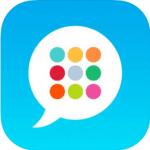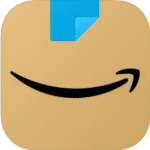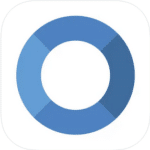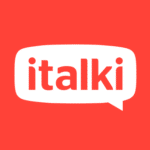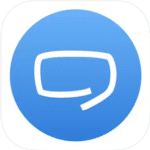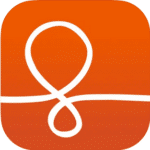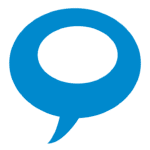
32 Tools for Language Learners to Practice the 4 Core Language Skills
Different language learning tools target different language skills.
Some of them are best suited for listening, while others have reading practice as their forte.
A few even claim to help you master all of the four core language skills: reading, listening, writing and speaking.
In this post, we’ve rounded up the best ones for each of the skills we’ve just mentioned—and then some.
Contents
- Listening Tools
- Vocabulary-building Tools
- Reading Tools
- Writing Tools
- Pronunciation Tools
- Communication Tools
- Translation Tools
- Cultural Learning Tools
Download: This blog post is available as a convenient and portable PDF that you can take anywhere. Click here to get a copy. (Download)
Listening Tools
1. Innovative Language
Price: Free (with in-app purchases)
Innovative Language has you covered with one of the best free podcast series for language learners on the web.
The series includes video and audio lessons that often focus on cultural aspects of the country where a target language is used, complete with vocabulary building exercises and helpful word lists. It’s updated with new lessons every week, with material geared toward absolute beginners all the way up to advanced learners nearing fluency.
Here’s just a sampling of the many popular foreign languages they currently offer:
The material is made and presented by professional teachers, and it’s one of the most prolific and consistent language sites on the market. Although they have a paid version of the service, many of the professionally produced audios and videos are absolutely free on the platform.
For a more complete review of Innovative Language, go here.
2. 8tracks
Price: Free (with in-app purchases)
One of the best ways to get your ears used to the sounds of a new language is by listening to its music. 8tracks is full of music playlists in every genre or language you can think of. Just type your target language in the search bar and hit “Enter,” or browse through the associated tags and artists that pop up as suggestions.
Not only will your ears have a taste of the sounds of your new language, but you’ll also open yourself up to new genres and artists you may not have had the chance to listen to before.
3. LingoClip
Price: Free (with in-app purchases)
LingoClip (formerly LyricsTraining) takes a karaoke-style approach to language learning with music.
Choose your language, pick a music video and select a level from beginner to expert. From there, you’ll have to fill in anywhere from a handful of key words to every word of the lyrics (depending on the level you selected) and sing along.
Pick a time of day when your neighbors and roommates are gone, and learn by belting your lungs out.
4. News in Slow by Linguistica 360
Price: Free
Linguistica 360 helps you train your ears, build your language skills and stay abreast of current events through its “News in Slow” series. You can choose between Spanish (from both Spain and Latin America), French, Italian and German.
Each episode includes a transcript in the target language, plus helpful vocabulary tips and explanations of the more difficult terms you’ll encounter. This is a great way to build vocabulary in context while learning to recognize the sound and feel of the target language.
Vocabulary-building Tools
5. Duolingo
Price: Free (with in-app purchases)
Duolingo’s cute little green bird will coach you through the days when you don’t feel like working on your linguistic chops. After having used this app for a while, you’ll have picked up new words and phrases that you’ll continue to strengthen as you build up your vocabulary.
So how effective is Duolingo for language acquisition, really? This review attempts to answer that question and more.
6. FluentU
Price: See pricing page here
This virtual immersion program uses native-level content like movie clips, music videos and vlogs to teach languages. Every video has interactive subtitles, which let you look up unfamiliar words instantly.
You can also save them as multimedia flashcards that let you see the word in example sentences as well as other videos—and it’s all contextual, so you’re never left wondering which meaning of the word is being used.
Finish your studies off with a post-video quiz or a review exercise that accompany flaschcards and adapt to your learning. FluentU can be used in a browser as well as on the iOS or Android app.
7. Memrise
Price: Free (with in-app purchases)
Another popular vocabulary-building tool, Memrise is a DIY flashcard app that lets you personalize your language learning.
Mix and match vocabulary lessons on any topic under the sun, like basic colors, numbers, phrasal verbs and different ways to say “I love you.” You can make your own “mems” as you go, selecting pictures and other mnemonic devices that work best for you.
Memrise isn’t necessarily for everyone, though. Here’s a more in-depth review of Memrise to help you decide if this app is for you.
8. Anki
Price: $24.99 for iOS; free for other platforms
Anki is arguably responsible for popularizing the Spaced Repetition System (SRS) method of vocabulary learning. You can download millions of pre-made flashcards that other users have made, or make your own set tailored to your specific language learning needs.
Anki uses an algorithm to track your progress and knowledge of each vocabulary word you study, helping you prioritize which words need a bit more repetition and which can go on the back burner for now.
For tips on how to make the most of Anki for language learning, read this article.
9. LingQ
Price: Free (with in-app purchases)
LingQ focuses on teaching you a language through authentic content like news articles, books, audiobooks, songs, podcasts and even recipes.
As you’re enjoying content, LingQ allows you to look up unfamiliar words and save them to study later. LingQ’s features can be used with blog posts, messages from friends and more.
Read more about LingQ in this complete review.
10. Clozemaster
Price: Free
Clozemaster aims to provide you with plenty of exposure to in-context vocabulary through a language learning game.
The game is fill-in-the-blank style. You’ll be presented with a sentence in your target language along with its translation. Then, you select which word to choose to complete that sentence. You can choose to play a multiple-choice game or input the text yourself.
Check out this Clozemaster review for more information.
Reading Tools
11. Wikipedia
Price: Free
With millions of articles available in nearly every language you can think of, Wikipedia offers contextualized target language reading.
Each article comes with images and links that allow you to clarify things you don’t understand. In other words, you can absorb new information in the language you’re practicing, saving you the effort of having to reach for a dictionary definition or translation.
12. Feedly
Price: Free (with in-app purchases)
Feedly is an RSS tool you can use to create your own customized content streams, with daily updates from blogs, online magazines and other digital content in your target language.
You have the option create different feeds for different languages, or divide them into categories like Spanish periodicals, Korean film blogs and news in Farsi.
13. Amazon Foreign Language Books
Price: Free (with in-app purchases)
Aside from all the free e-books available across the web, you can also check out Amazon’s robust foreign language books section, where you can find the right reading materials for you without breaking the bank.
Search for your new favorite tomes according to title or language, and if possible, find a free sample of the book before buying it. That way, you can read a few pages and make sure it’s both at your reading level and something you’ll actually enjoy swiping through.
14. Readlang
Price: Free; premium version is at $6/month or $48/year
Available on: Website
Readlang is a downloadable web reader for language learners. Once you’ve signed up and installed Readlang, you can instantly translate any text. Plus, any words you translate are saved and you can practice them using flashcards.
Since Readlang works with over 40 languages, most languages you might want to learn are likely included.
Writing Tools
15. HelloTalk
Price: Free (with in-app purchases)
HelloTalk is a language exchange app that helps you connect with native speakers of your target language (as well as learners of your native language) via text.
Through it, you can find conversation partners and start chatting about your preferred topics. You can also take advantage of the app’s integrated translation, pronunciation and transliteration functions (for those learning an unfamiliar writing system). In fact, the pronunciation function can help you sound out the unfamiliar words your partner is texting you, allowing you to build new friendships and your speaking skills at the same time.
Curious? Read this HelloTalk review for more information about the app.
16. Omniglot Writing Systems
Price: Free
Available on: Website
If you’re learning a language with a non-Latin alphabet, Omniglot’s Writing Systems is a spectacular place to start.
On there, you can familiarize yourself with scripts and find links to online resources for learning them. You can also just keep the page bookmarked for reference as you start writing or texting with some of the other tools mentioned here.
17. Tumblr
Price: Free (with in-app purchases)
Need an unstructured space to try out your target language and learn writing?
Start your own page on a site like Tumblr, where you can scribble random thoughts and make up your own writing exercises. Adjust your settings to keep it private if you’re feeling shy, or go public and actively solicit comments and feedback from speakers of the language.
To make sure that native speakers of your target language find you, make sure to use the appropriate tags. For example, if you’re learning Spanish, you can tag your post with #learningSpanish (or the Spanish equivalent of that phrase) to make it more visible in the feeds of native speakers who may be willing to teach you the language.
18. WordPress
Price: Free
Like Tumblr, WordPress is a great place to write down pretty much anything you want in any language you want. In fact, over 40 percent of all websites on the internet are built in WordPress. It’s safe to assume that a good chunk of those websites aren’t in English.
Should you choose, you can purchase a personalized domain for your WordPress site and monetize it—whether it’s through traffic to your site or by turning it into an e-commerce platform.
Pronunciation Tools
19. Sounds of Speech
Price: $3.99 (free if you’re using the web version)
The International Phonetic Alphabet (IPA) is one of the best resources for learning about the many different sounds that make up the world’s languages, and Sounds of Speech is one of the best tools for practicing them.
The University of Iowa’s Sounds of Speech tool is an excellent interactive guide to the mechanics of the mouth, demonstrating exactly how to move your tongue and other speech organs to produce specific consonant and vowel sounds. This helps you get past the uvular R’s and ambiguous mid-vowels that otherwise trip up your tongue in languages like German and Spanish.
20. Forvo
Price: $2.99 (free if you’re using the web version)
Forvo is a comprehensive online pronunciation dictionary, and it belongs in your bookmarks bar no matter where you are in learning a language.
Just search the word that’s giving you trouble, and listen to user-provided pronunciations from native speakers. Note, however, that you’re more likely to find individual words on this website than entire sentences.
Communication Tools
21. Verbling
Price: Free (with in-app purchases)
If you want something a little more formal than your casual language exchange, Verbling is a good place to start. Here, you can search for professional native teachers, schedule classes with them and make a schedule and personalized lessons as you go.
You can explore hundreds of online language teachers and find the one who’s right for you. When you search, you can filter the results according to price, availability and even the other languages they speak. That means if your native language is Chinese or German, you can find a teacher to instruct you in that language. Plus, you don’t need Skype or other third-party programs to communicate with your teacher—everything you need is here!
22. italki
Price: Free (with in-app purchases)
This is another place where you can search for teachers who are fluent or native speakers of your target language. Most notably, italki classifies its teachers into Community Tutors or Professional Teachers. The only real difference between the two is that Professional Teachers have formal credentials, so they’re likely to be pricier than Community Tutors.
The great thing about italki is that, from the search results alone, you can filter teachers according to the language and skills they teach, their availability, where they’re from and what type of teacher they are.
Need an honest review about italki? Let me direct you to this post.
23. HiNative
Price: Free (with in-app purchases)
HiNative lets you casually reach out to native speakers of your target language with questions you never thought you needed to ask. For example, is this word masculine or feminine? How come this word is spelled differently sometimes?
Having HiNative is like carrying a no-strings-attached teacher in your pocket. It’s great for whenever you need to answer those pesky language questions that otherwise keep you up at night.
Before you give HiNative a whirl, make sure you read this review first.
24. Speaky
Price: Free
Speaky is one of the biggest free online language exchange communities, and you’ll find that it offers many of the same benefits as similar sites that charge a monthly fee.
Use it to find and coordinate Skype exchanges with native speakers of your target language, and be ready to help them learn your native language as well.
25. Meetup
Price: Free (with in-app purchases)
This site isn’t necessarily meant for language learners, but you’re bound to find like-minded individuals who are either your neighbors or travelers passing through your community on here.
Meetup is often used to host general language exchange meetups (hence its name) or a slew of language-specific meetups depending on the size of your city.
26. Couchsurfing
Price: Free (with in-app purchases)
Similar to Meetup, Couchsurfing events also include regular language exchanges.
Plus, you can search for speakers of a particular language in your area who you can meet up with for a coffee and a multilingual chat.
Translation Tools
27. Linguee
Price: Free
Linguee is an online translator that offers contextualized translations that account for the many shades of meaning of a single word.
Type your query into the search box, and you’ll get the language you searched in on the left and your target language on the right. Each will include the same sentence or paragraph in both languages, giving you the extra context to ensure the word you’re translating doesn’t mean something totally off the wall.
28. Bab.la
Price: Free
Available on: Website
Bab.la is similar to Linguee in its use of in-context definitions pulled from across the web. It also offers a few handy extra tools like a verb conjugator that will help you explore the different forms and uses of the words and phrases you’re learning.
29. Reverso
Price: Free (with in-app purchases)
Like the others already listed, Reverso isn’t your average free online translator tool. Aside from translating what you input from one language to another, it also provides examples of sentences where the word or phrase you translated appears, allowing you to see them in context.
However, as with all free translator tools, it’s best to verify the results from this app with an expert translator to check if the translation is accurate.
Cultural Learning Tools
30. Streema
Price: Free (with in-app purchases)
Streema provides free online access to TV and radio stations from over a hundred countries around the world.
Of course, the most-studied languages will have a wealth of stations available. But you can also find relatively obscure ones like Amharic or Zulu—just browse through the Ethiopian and South African TV channels until you find something in your target language that interests you, and tune in to what the locals are watching.
31. BBC Languages
Price: Free
Available on: Website
BBC Languages is one of the biggest online repositories of free language learning material. You’ll find free lessons and foreign language cheat sheets, as well as links to real media like TV shows, newspapers and blogs that native speakers regularly follow.
The site isn’t updated anymore, but since this is the BBC we’re talking about, the materials are likely to be timeless and useful for building a solid foundation in the target language of your choice.
32. Alexa
Price: Free
Believe it or not, Amazon’s AI virtual assistant can be a handy language and culture teacher as well. As you know, Alexa works like a voice-assisted version of Google—ask her anything, and she’ll give you the best answer she can pull from her database.
The best part is you can actually augment Alexa’s language-teaching capabilities using her “Skills” feature. For the specifics on how to get Alexa to teach you languages, go here.
Bonus: A Good VPN Service
Price: Free (with in-app purchases)
Sometimes, you can’t access content from another country unless you have a local IP address (i.e., you’re physically inside the country in question). A way to get around this is by using free and cheap VPN (Virtual Private Network) services. Once installed, these will let you change your web browser’s IP address, convincing those servers halfway across the world that you’re really logging in from within the country.
An easy way to set up a VPN and magically change your location to Germany, France, Korea or any other country is by installing HMA VPN on your devices. This works whether you’re using a desktop computer, smartphone or internet-enabled TVs and game systems.
Take advantage of the best language learning tools above and use them to learn a language efficiently. That way, you’ll have a smooth path forward and be adequately equipped for the next linguistic challenge.
Download: This blog post is available as a convenient and portable PDF that you can take anywhere. Click here to get a copy. (Download)
